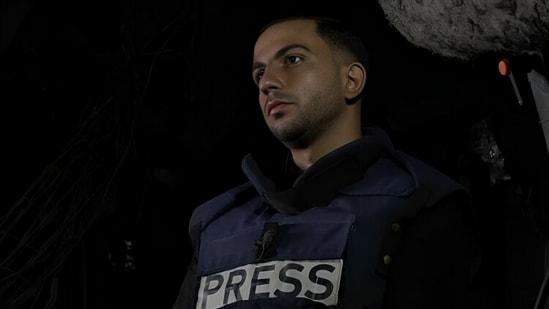Gaza Journalist Anas Al-Sharif Under Threat: Allegations, Outcry, and Calls for Action
Anas Al-Sharif, a widely-recognized journalist reporting from Gaza, has described the current threats to his life as a “precursor to my assassination.” Days after being publicly accused of terrorism by the Israel Defense Forces’ (IDF) Arabic-language spokesperson, Al-Sharif finds himself at the center of international concern surrounding the safety of journalists in active war zones.
This isn’t just an online spat—it’s been escalating, and many fear it could soon turn deadly. The Committee to Protect Journalists (CPJ) and Al Jazeera, Al-Sharif’s employer, have both sounded the alarm. The personal and professional attacks against him have caught the attention of global media outlets and international rights bodies alike.
Timeline of Events
- July 23–24, 2024: IDF spokesperson Avichay Adraee posts multiple videos accusing Al-Sharif of fabricating reports, calling his broadcasts “a crocodile tears show.”
- Earlier in July: Adraee labels Al-Sharif’s journalistic work as “intellectual terrorism.”
- Weeks prior: Coverage by Al-Sharif, including emotional live segments on starvation in Gaza, receive tens of thousands of views and online shares.
“Avichay Adraee’s campaign is not only a media threat or an image destruction; it is a real-life threat,” Al-Sharif told CPJ, underscoring the personal danger he now faces—from both the air and the algorithm.
Official Statements and Reactions
“All of this is happening because my coverage of the crimes of the Israeli occupation in the Gaza Strip harms them and damages their image in the world,” Al-Sharif said in a direct allegation against Israel.
Meanwhile, CPJ’s regional director Sara Qudah didn’t mince words either. She expressed concern that this could be yet another attempt at justifying lethal force against a reporter. “The latest accusations by the IDF represent an effort to manufacture consent to kill Al-Sharif.” Her plea to the international community was pointed: provide immediate protection before it’s too late.
Al Jazeera, responding to the siege on its credibility, stated on Friday: “It denounces these relentless efforts, which have consistently incited against its staff since the beginning of its coverage of the ongoing Israeli war on Gaza.”
Community Response: Global Media and Journalists Speak Up
In the days following the Adraee videos, global news giants such as BBC, AFP, AP, and Reuters issued a joint public statement. Their message wasn’t abstract—it was one of “desperate concern” for journalists operating in Gaza, especially local voices like Al-Sharif’s that have become a rare source of information in the besieged region.
The CPJ, in harsh language perhaps not typically associated with neutral press defenders, accused Israel of purposefully targeting reporters. They provided names: Hamza Al Dahdouh, Ismail Al Ghoul, Rami Al Refee, and Hossam Shabat—all journalists killed in Israeli airstrikes, according to CPJ reports.
Al-Sharif, just 28 years old, is a father. Social media posts show glimpses of his family life—his young daughter, relatives lost in strikes. His humanity is part of why his situation now resonates internationally. When he cried on-air reporting Gaza’s starvation crisis, it wasn’t performance—it was anguish. And now, potentially, it’s a target on his back.
Background: What Triggered This Accusation?
Al-Sharif’s reporting in July included on-the-ground coverage of food scarcity, medical shortages, and grieving families. He captured footage that went viral internationally, galvanizing renewed calls for intervention in Gaza. Shortly after that, Adraee’s campaign began. The narrative shifted—from what was happening to who was broadcasting it.
Footage of Al-Sharif emotionally reporting the hunger crisis came just days before the IDF and the United States both pulled out of negotiations aimed at a potential ceasefire. Israeli accusations quickly followed that Al-Sharif had ties to Hamas’s military arm, Al-Qassam. No evidence has been publicly shared to substantiate these claims.
The Bigger Picture: Journalism in a Warzone
Journalism in Gaza today is more than dangerous—it’s nearly impossible. Foreign correspondents have been barred from the area for months, making local reporters like Al-Sharif indispensable—and vulnerable. Their outlet becomes their lifeline and their liability.
In past months, multiple journalists besides Al-Sharif have reported harassment, surveillance, and targeting. Some believe the strategy is deliberate: silence the ones who can’t leave.
Israel’s move earlier this year to ban Al Jazeera from operating in its territory and the West Bank sets the tone. In the broader context of over 50,000 reported deaths since October 7, 2023, and increasing international scrutiny, efforts to muzzle media voices are seen by many as a tactic of control.
What’s Happening Now?
With Al-Sharif staying put—and continuing to post—it’s clear he’s not retreating. Perhaps he can’t. Perhaps he feels the weight of being one of the few still able to report from within Gaza’s borders.
The United Nations has responded to the broader crisis with a planned peace conference from July 28–30 in New York. The United States and Israel, however, will not attend. Co-chaired by France and Saudi Arabia, the event is intended to address the roots of the Gaza conflict and concerns like the increasing starvation toll, pegged at over 110 deaths so far.
The absence of two of the most involved nations doesn’t inspire confidence. Still, the dialogue itself might be a step—if a small one—toward more accountability.
So, What’s Next for Al-Sharif?
The short answer? No one knows. In journalism, outcomes are rarely tidy. What’s certain is this: Al-Sharif’s safety feels more fragile now than it did just a few weeks ago.
International pressure may offer temporary coverage, and global condemnations can only do so much when missiles and misinformation are this intertwined. When asked by CPJ why he thought he was being targeted, Al-Sharif didn’t hesitate: “Because my reporting damages their image.”
In today’s Gaza, that alone might be enough to get you killed.
Stay aware. Stay cautious. And if you’re watching from afar, don’t look away.

